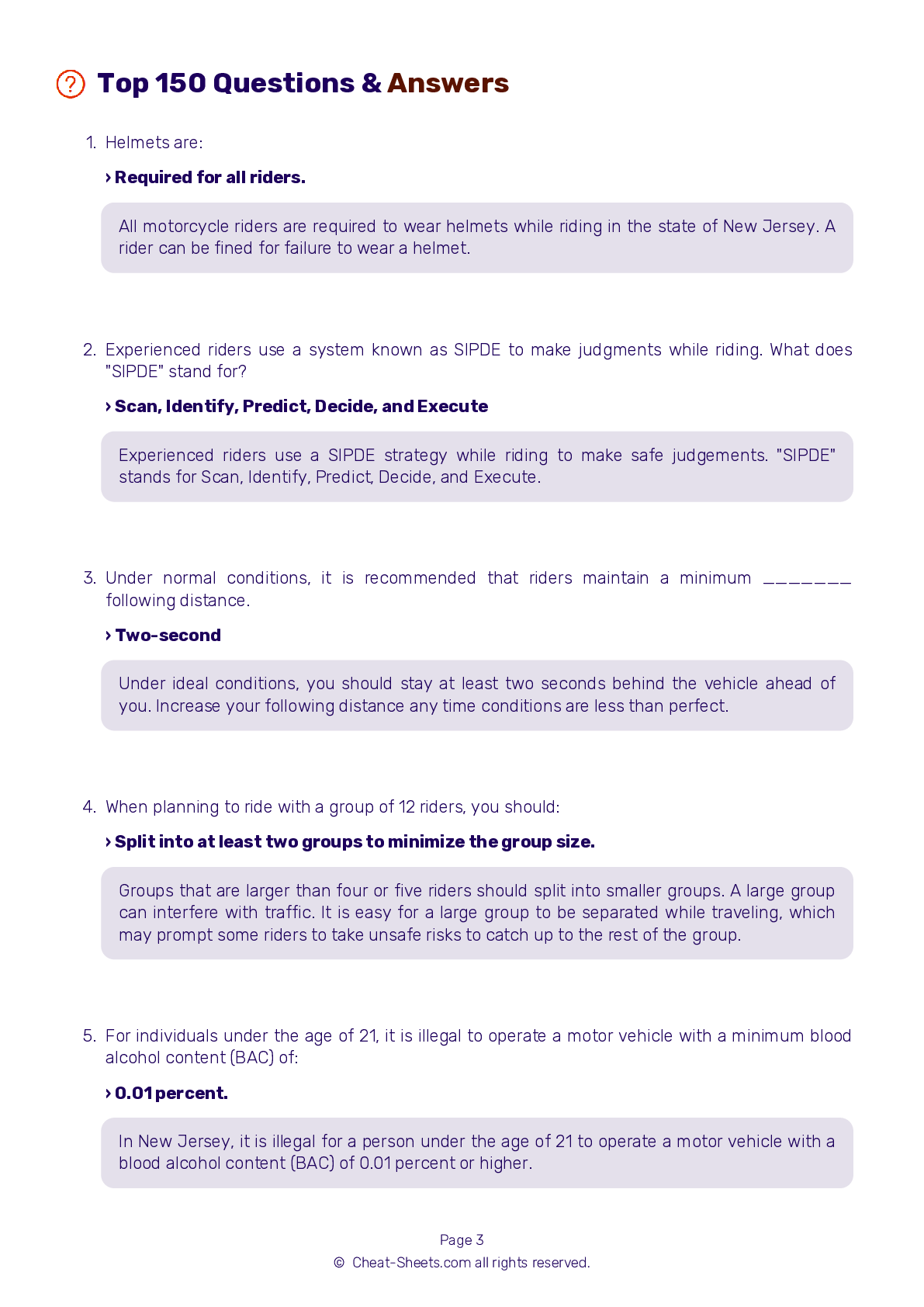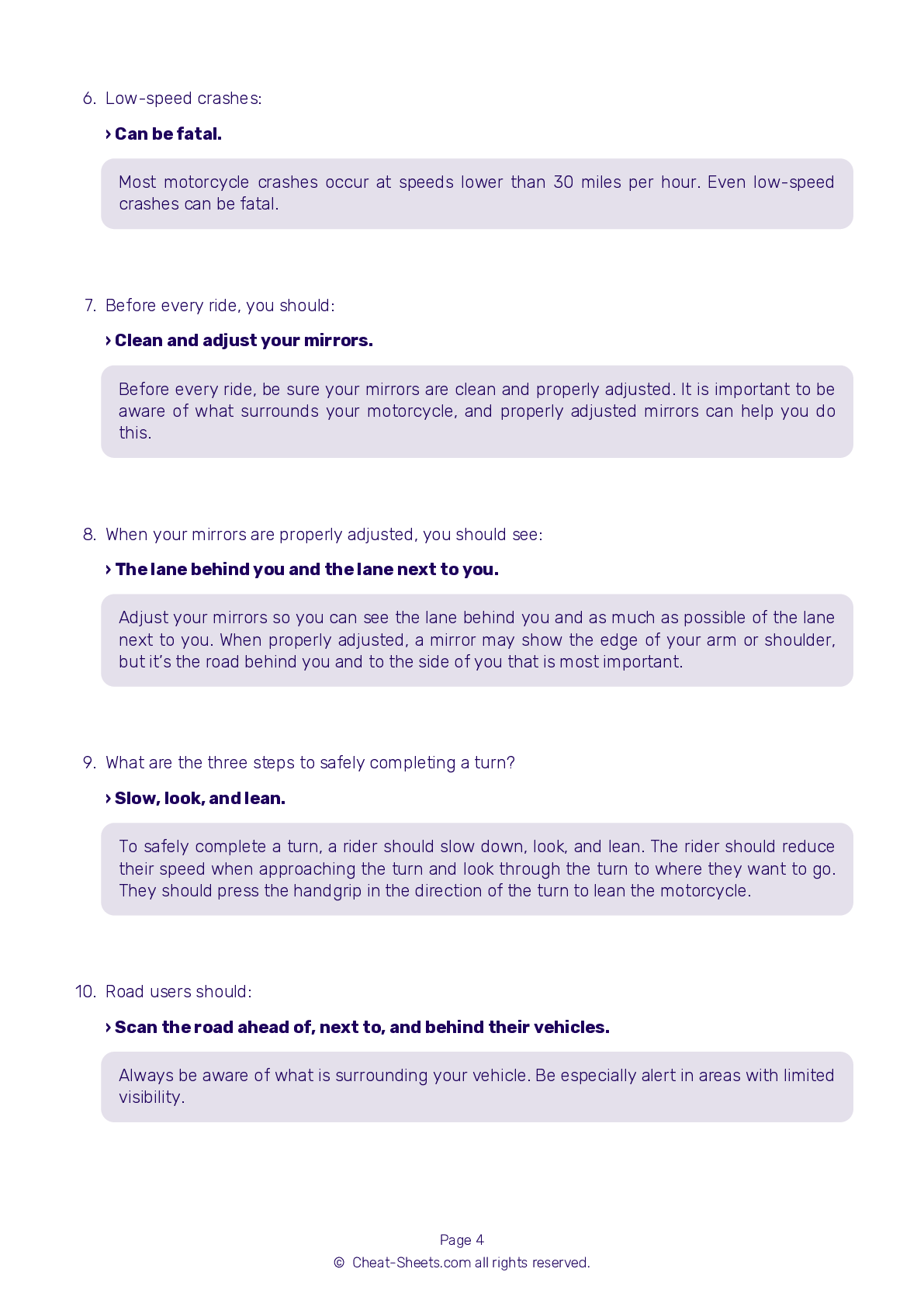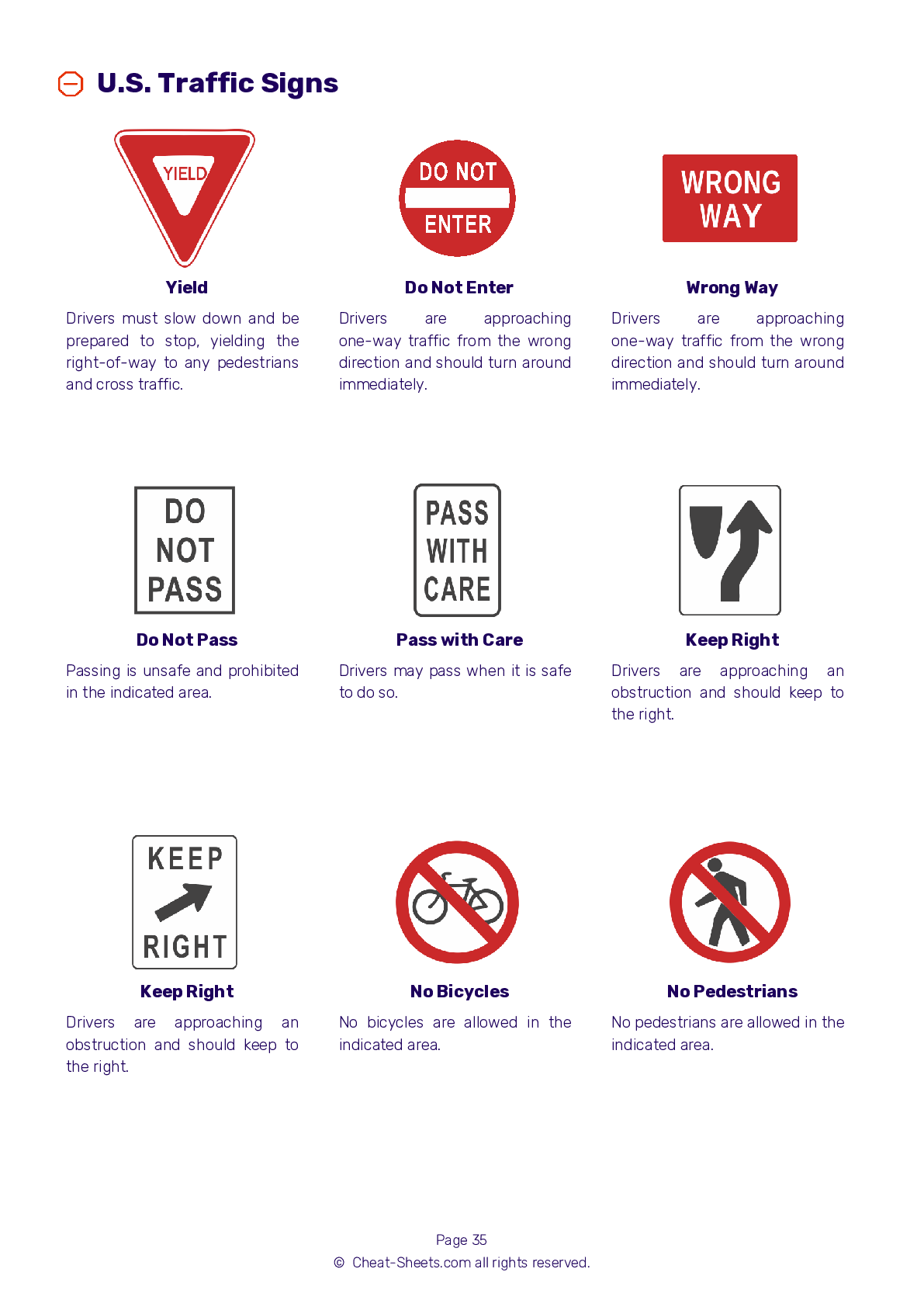2024 New Jersey Motorcycle Permit Test 10
The following questions are from real DMV written motorcycle permit tests. These are some of the actual permit questions you will face in New Jersey when getting your motorcycle learners permit. Each motorcycle theory practice test question has three answer choices. Select one answer for each question and select "grade this section." You can find this button at the bottom of the drivers license quiz. For a complete list of questions and answers for New Jersey please visit https://cheat-sheets.dmv-written-test.com/en/new-jersey/motorcycle.
Number of Tests
Number of Question
Passing Score
1. Maintain an adequate following distance behind other vehicles:
Explanation
Maintaining an adequate following distance ensures that you will have enough space to stop or swerve out of the way if the vehicle ahead of you stops suddenly. A space cushion also provides you with a better view of any hazards on the road surface, such as potholes.
2. To prevent getting fatigued on a long ride, you should do all of the following, except:
Explanation
To reduce the danger of fatigue when riding, dress to protect yourself against tiring weather conditions, such as wind and rain. Limit yourself to no more than about six hours of riding per day and stop for a break at least once every two hours. Avoid taking artificial stimulants since you may experience extreme fatigue when they start to wear off.
3. When braking on a slippery surface, you should:
Explanation
To ride safely on a slippery surface, you should reduce your speed and avoid making sudden moves. Use both brakes if you must slow down or stop.
4. Which of the following types of footwear is best for a motorcycle operator?
Explanation
Sturdy boots or shoes that are high enough to support the ankles can provide the best protection for motorcyclists. Laced up boots are best, but high-top boots or heavy shoes are fine. If a motorcyclist wears shoes that have long laces, they should be sure to securely tuck the laces away before riding.
5. When changing lanes, riders should:
Explanation
A motorcycle has blind spots just like any other vehicle. A rider must always turn their head to check for traffic before changing lanes.
6. When both braking and swerving must be done to avoid an unexpected hazard, a rider should:
Explanation
Because you need adequate traction to swerve safely, you should not brake and swerve at the same time. Instead, if you approach a hazard that requires you to brake and swerve, you should perform one action and then the other.
7. To adjust for added weight when riding with a passenger, you should:
Explanation




